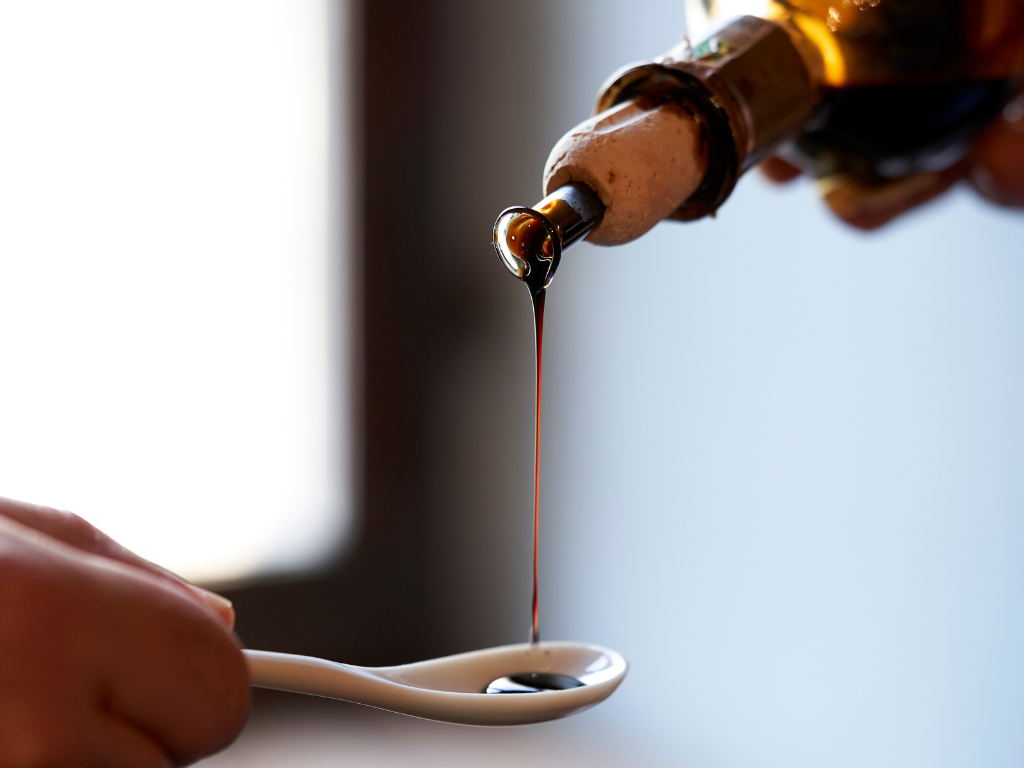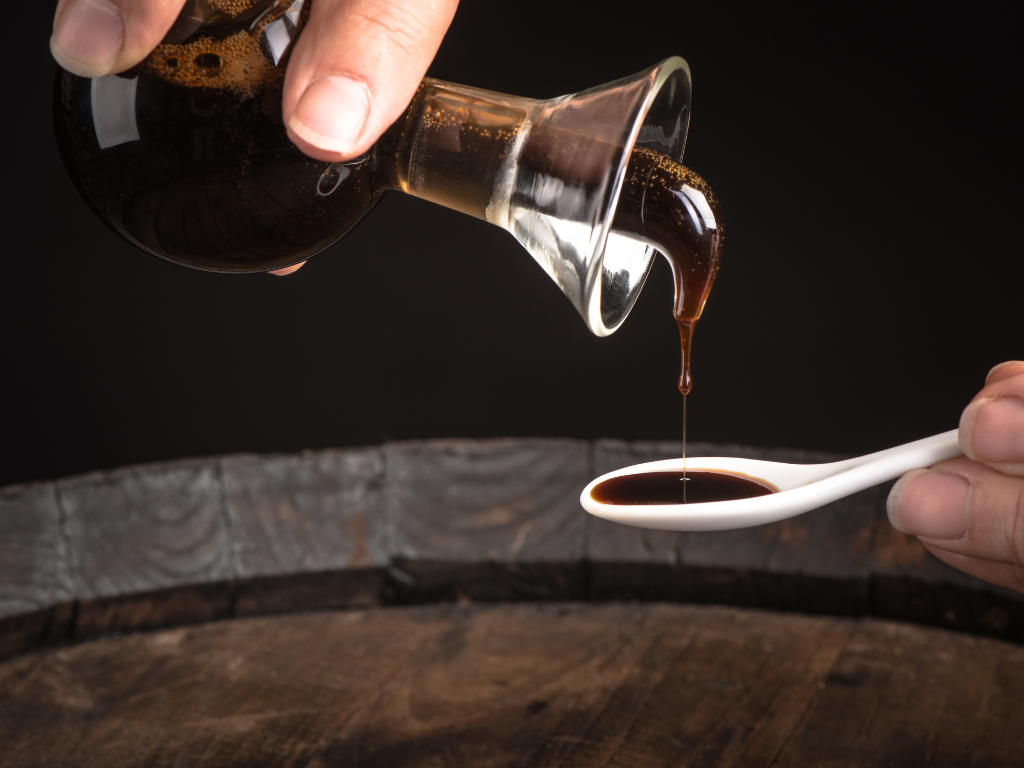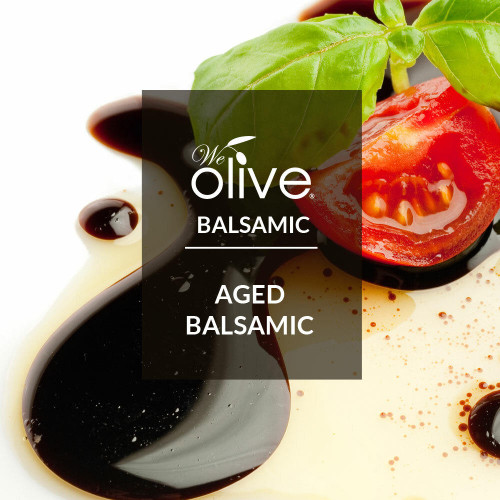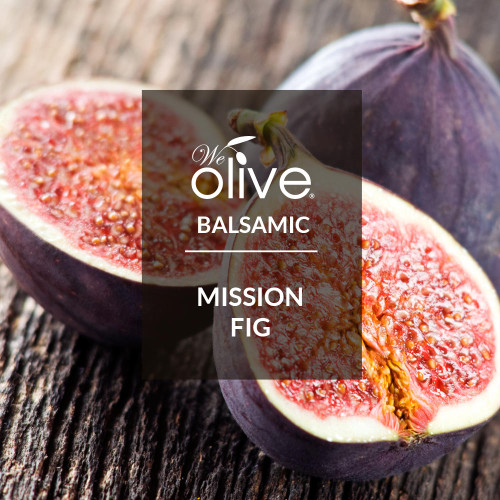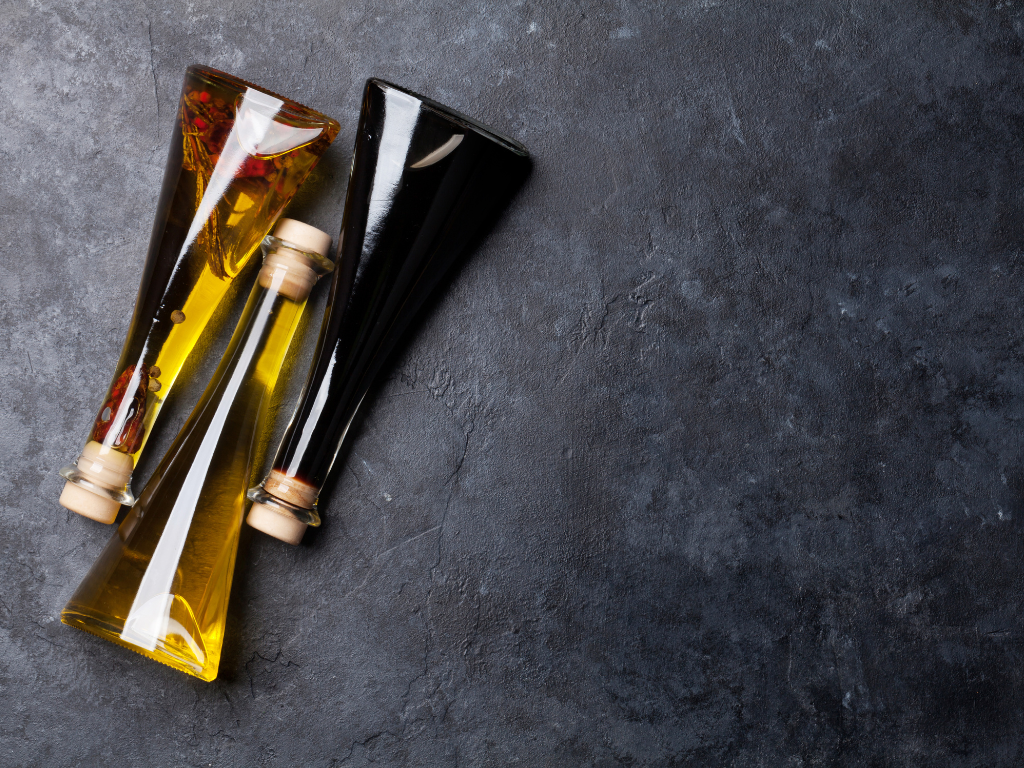Aged Balsamic Vinegar - What Is It and How to Use It
Posted by Ruth Mercurio, Professional Olive Oil & Wine Taster on 20th Feb 2023
Aged Balsamic Vinegar - What Is It and How to Use It
Balsamic vinegar is obtained by mixing
several select wines (white and red) and leaving them to rest inside special
wooden barrels. Depending on the type of vinegar you want to obtain, they are
left to age for more or less time.
Aged balsamic vinegar takes about
12 years to reach its best point, while those of simple quality mature in 3 to
5 years.
The flavor of aged balsamic vinegar is
characterized by having sweet tints and preserving the bitterness of wine. This
raw flavor is obtained because aged balsamic vinegar is prepared from the wine
with the "must," the fresh juice obtained from the grapes before
making the wine. The sap is boiled to form a syrup, giving it that
characteristic color and texture. For this reason, aged balsamic vinegar is
very flexible and can be used for many things. Within its category, there are
also other varieties of vinegar, which are labeled according to their aging
time:
● Affinato: 12 years of aging
● Vecchio: 15 to 20 years of aging
● Extra Vecchio: 25 years of aging
Each year, balsamic vinegar
is transferred to different wooden barrels so that it can get some of the
flavors of the other woods.
The only woods approved for elaboration are oak, cherry, chestnut, mulberry,
acacia, juniper, and enzina.
But what can aged balsamic vinegar offer to
your kitchen? Aged
balsamic
vinegar
is a fantastic product that can give that extra touch to your
dishes. But where does it come from? Let's learn more about the origin of this
excellent product, and later we will talk about how to combine it for superior results.
The origin of aged balsamic vinegar
There is a lot of different information
about the origin of
aged balsamic
vinegar,
making it hard to identify its true origin. However, we know for
sure the place where it was born. The birthplace of aged balsamic vinegar is
Italy, in Emilia Romagna,
Modena.
For many years balsamic vinegar has been used to prepare different dishes and
sandwiches, ranging from the most straightforward salad to the most elaborate
seafood or meats and even some pieces of bread.
According to historical records, King Henry III of Franconia received a bottle
of vinegar as a gift in 1046. Vinegar was used for a long time; in the Middle
Ages, when many disciplines, such as cooking, medicine, and art, began to
emerge with greater force.
Aged balsamic vinegar was known and used only in Italy for a long time. Italian
families have made it for almost a thousand years, keeping the traditional
recipe. But when Italy's trading business increased, thousands of Europeans
tried this fantastic product and started to use it, thus increasing the
popularity of balsamic vinegar in Europe.
In 1970 aged balsamic vinegar began to be
known outside of Europe. In many cities, modern cafes and bars began to become
popular, as well as promoting the use of balsamic vinegar in the kitchen.
Balsamic vinegar became a staple of Italian culture, and its different flavors
became famous worldwide.
As we mentioned before,
quality balsamic vinegar has a designation of origin from the northern part of
Italy and must bear the nickname "balsamic vinegar tradizionale" to
know that it meets the properties and quality standards. But how to use it in
food? Next, we give you some tricks about using balsamic vinegar in the kitchen and getting the most out of it.
Uses of Aged Balsamic Vinegar
Balsamic vinegar alone has many health
benefits since the resulting product comes from grapes and contains many
natural antioxidants and other fibers that help the body's digestion. Having
varied nutrients also helps to have a feeling of satiety, so it is ideal to
accompany light foods such as steamed vegetables or salads.
This product can be used surprisingly with
sweet foods since, in its preparation, no salts or other sugars are added that
could alter the flavors. The only flavors that predominate in aged balsamic
vinegar are natural ones from fermented grape juice and its sugars.
For example, you can use it to serve a
creamy ice cream that you want to give a touch of originality and something
bittersweet, such as vanilla or cheese. And yes, you can combine it with
cheese, such as mozzarella, which is characteristic of Italy and is usually
added to the calzone dough.
Balsamic
vinegar
is ideal for dressing meats and
vegetables. Still, when used in hot dishes, you should add it just
before removing the vegetables or meat from
the heat so that the flavor is impregnated without losing its natural aroma.
You can also use it in
red meats such as rib eye or T-bone since they are very juicy meats that go perfectly with the texture and flavor of balsamic vinegar.
The same applies to white meats such as fish. Marinate the tilapia filet and let the cooking process do the rest. In this manner, the fish retains its aroma and flavor as long as it is cooked over low heat.
For example,
there are flavored varieties of balsamic vinegar, such as
fig balsamic vinegar, which is ideal for accompanying fresh fruit or vegetable salads but also to savor with a
good toast of traditional sourdough bread. You can also use it to
accompany sandwiches or some pieces of bread.
Sourdough bread goes very well with aged
balsamic vinegar because both products have a fermentation process that gives
them a characteristic flavor. Another excellent combination is combining
balsamic vinegar with dressings based on
olive oil and lemons.
In addition to the previous combinations,
many other flavors and preparations of balsamic vinegar are delicious. As with
anything, the best thing is to try it yourself and discover the richness and
flexibility of this fantastic product.
So visit our
olive oil store near me section where you will
find delicious traditional aged balsamic vinegar and some vinegar flavors or
other organic products. You can also contact us today
at
805 238 2900 or info@weolive.com.


